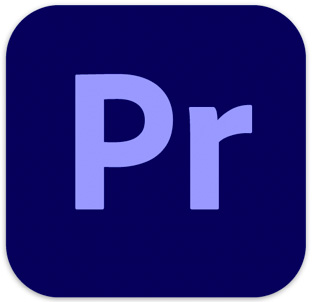 Gloria sent me a note recently:
Gloria sent me a note recently:
You did a GREAT article on setting up preferences in Premiere some years ago. With all the new updates, would it be possible to do an article on setting preferences for the latest version of Premiere Pro 2022?
Sure. Let’s take a look. (These screen shots are from Adobe Premiere Pro 22.5.0)
As with all Adobe applications, there is a wealth of preferences to choose from. While every editor has their own way of working, here are the changes I make to Adobe’s default settings.

NOTE: To reset Premiere preferences to their default settings, quit the app, then, press Alt (Windows) or Option (Mac) while restarting the app from the dock. When this dialog appears, click OK.
There are 16 categories of preferences in Premiere, all listed in the sidebar on the left.
GENERAL

If you don’t like the new Home screen or you are spending days working in the same project, set At Startup to open the most recent project you are working on.
APPEARANCE
No changes.
AUDIO

I enable Render audio when rendering video.
AUDIO HARDWARE

I use external audio gear. So I change these default Input, Output and Clock to point to the external audio gear. A sample rate of 48000 is perfect; virtually every camera records audio at a 48K sample rate.
AUTO SAVE

Consider enabling Premiere to save your current project every time it does an auto save. That way, you are automatically protected even if you don’t remember to save your project as often as you should.
COLLABORATION
No changes
CONTROL SURFACE
No changes, however, if you use external control surfaces – of which there are many to choose from – be sure it is listed in this window.
GRAPHICS
No changes
LABELS
No changes
MEDIA

To properly scale still images, set Default Media Scaling to Set to Frame Size. (If you are doing moves on stills, set this to None.)
While you can use this preference to turn proxies on or off, it is faster to use the Proxy button in the Wrench menu for both the Program and Source monitors.
Turn Growing Files off, unless you are using them. Enabling this unnecessarily slows down Premiere.
MEDIA CACHE

Enable Automatically delete cache files older than 90 days. If Premiere needs one of these, it will rebuild it. Otherwise, you don’t need older files to take up storage space.
MEMORY

Make sure you assign at least 50% of installed RAM to Premiere. If you are editing large projects, set this to 80% of available RAM.
PLAYBACK

If you are not using an external video monitor, turn off Mercury Transmit. If you are, turn this on. It is on by default.
Preroll, postroll and frame stepping are all personal choice. I like the defaults, but you may prefer different preview settings.
SYNC SETTINGS
I don’t sync to the Creative Cloud, partly because of a lack of trust but mostly because I only use one machine for editing. So I don’t change these.
TIMELINE

A 30-frame video dissolve is too long. I set this to 0.67 seconds so it’s the same at all frame rates.
Then, I change many of the settings at the bottom.
TRIM

I enable “Allow selection tool…”
Also, while I don’t change the large trim offset, you might consider this, based upon your own editing.
SUMMARY
This is how I configure my system. Share your personal choices in the Comments. Let me know what you changed and why.
10 Responses to Optimize Adobe Premiere Pro Preferences
Thanks Larry. This is super helpful.
Carol:
You are most welcome.
Larry
Larry, thank you for taking the time to review optimizing Adobe Premiere Pro preferences. Much appreciated.
Dennis:
Happy to help.
Larry
HI LARRY, As capture & device control are not listed in this article, can we assume you mean “no changes”. ???
Gloria:
Correct.
Larry
Under Media:
Does changing “Intermediate Media Timebase” make much of a difference? I would guess that would be super crucial but I may also have a misunderstanding of what that does.
Does it help to set it to the same settings as the main timeline?
Won:
This is not a big deal. Indeterminant media are clips which have no native timecode. For example, still images, Photoshop files or solid colors. For the purposes of displaying these in the Source monitor, Premiere applies the indeterminant timecode settings.
Once a clip like this is edited into the timeline, it will be rendered to match the timecode and frame rate of the project. So, while it is good if the indeterminant setting matches the project, it is not critical if it doesn’t.
Larry
Do you have one of these for where to save files? By default, Adobe saves everything to the computer in the Adobe documents files, which doesn’t make sense to me. I can see saving project files there since they aren’t very large, but videos should be on an external drive. How do you set that up?
Nina:
When you get ready to export your sequence, and you are in the Export panel, double-click the blue path name text. That opens up a File Save dialog where you can specify where to save your files.
Larry